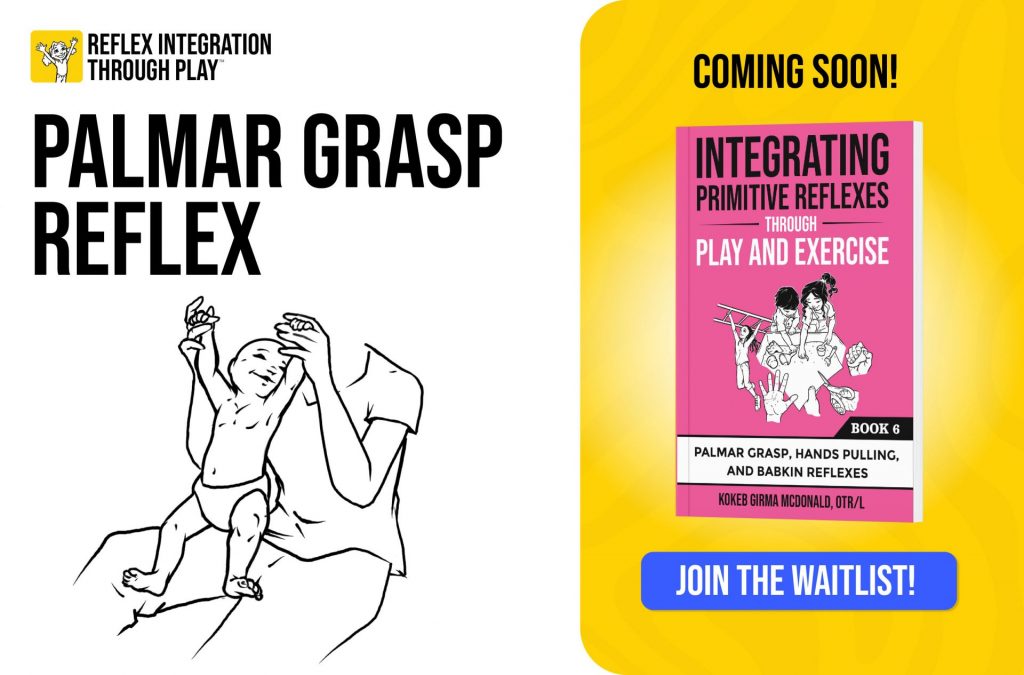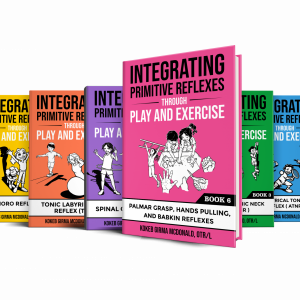The palmar grasp reflex is one of the first reflexes we see in infants, characterized by their automatic response to grasp an object placed in their hand. This reflex isn’t just a cute reaction; it’s a critical building block for many developmental skills. In Reflex Integration Through Play (RITP), we recognize the importance of integrating this reflex as it serves as a foundation for various physical, cognitive, and social abilities.

Here’s a look at how the palmar grasp reflex contributes to a child’s development across multiple areas:
1. Strengthens Grip for Holding Objects
This reflex helps build the muscles needed to hold onto objects. Over time, this strength supports fine motor skills like arts and crafts, handwriting, dressing, and feeding.
2. Strengthens Social Bonds
When babies hold a caregiver’s hand, it creates a special connection. This reflex encourages physical touch, helping build trust and emotional bonds.
3. Builds Skills for Play
The palmar grasp reflex helps kids learn to use their hands for play. It allows them to hold toys, stack blocks, and grab objects. These basic hand skills are important for developing more advanced abilities as they grow.
4. Helps with Reaching and Exploring
When babies grab objects, they start learning how to reach and explore different shapes and textures. This improves their sense of touch and control over their hands.
5. Encourages Climbing and Active Play
A strong grip helps kids climb and play on equipment like ladders and monkey bars. These activities improve their strength, coordination, and confidence.
6. Improves Spatial Awareness
Reaching and grasping teaches kids how to judge where objects are in space. This skill helps them build with blocks, fit shapes, and move through their environment.
7. Supports Feeding and Self-Care
As kids practice grabbing objects, they naturally bring things to their mouths in collaboration with the Babkin Reflex. This improves their coordination for feeding and learning how to guide objects accurately.
8. Supports Other Reflex Development
The palmar grasp reflex helps prepare for other important reflexes, like the Moro reflex. These reflexes work together to support a child’s physical, emotional, and mental growth.
9. Improves Hand-Eye Coordination
This reflex helps kids learn to use their hands and eyes together. It improves skills for tasks like eating, dressing, and playing with toys.
10. Cognitive Benefits
The palmar grasp reflex is also connected to cognitive development, helping children learn important concepts:
- Holding On: Physically holding onto objects teaches kids about attachment, control, and persistence.
- Letting Go: Learning to release objects mirrors the emotional skill of letting go, helping children understand how to move forward and accept change.
- Grasping Ideas: As children practice grasping physical objects, they also build the ability to “grasp” new ideas. This forms the foundation for understanding more complex concepts as they grow.
If you want to learn more about hand development and reflex integration, To learn more, join the waitlist for our upcoming book, Integrating Primitive Reflexes Through Play and Exercise: An Interactive Guide to the Palmar Grasp, Hands Pulling, and Babkin Reflexes.
- This book explores how reflexes influence child development, helps identify retained or underdeveloped reflex patterns, and provides recommended exercises for proper integration.





